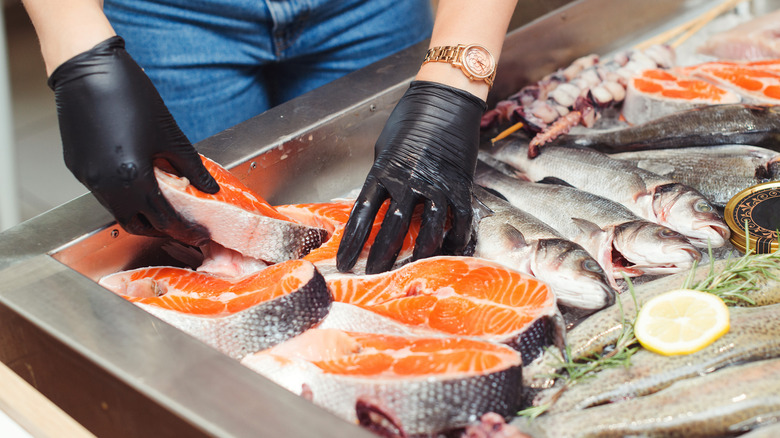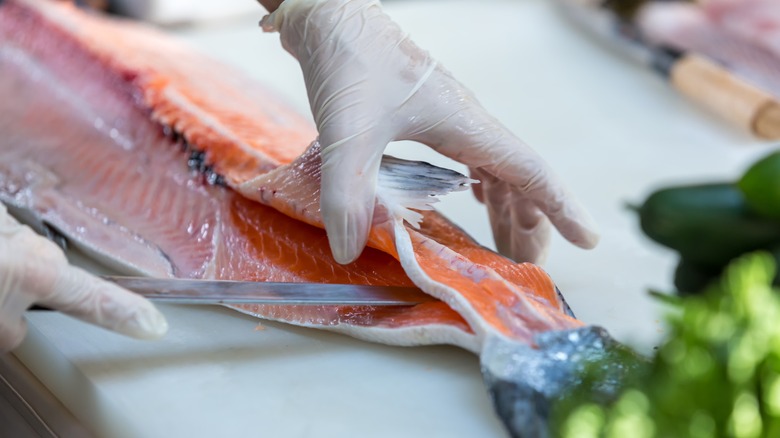Salmon Prices In Australia Are Getting Out Of Control
When you think of Australia, the Sydney Opera House or Bondi Beach might come to mind. But, step aside, kangaroos: Salmon might be the country's unofficial mascot. In 2016, more than 25% of Australians reported eating salmon at least once every week, per financial consulting platform Roy Morgan – a figure that has been steadily increasing since 2014. Chef Matt Moran tells GoodFood, "Twenty years ago we'd get salmon for six weeks of the year. Now, it's 12 months of the year ... There's no season; It's in every supermarket." The salmon industry in Tasmania, in particular, says GoodFood, is valued at a whopping $550 million per year, and is estimated to hit $1 billion by 2030. Australians even have their own type of salmon. According to Sydney Fish Market, the Australian Salmon is a salmon breed typically wild-caught off the coasts of Victoria, Tasmania, and other regions, and is available year-round.
Another important trademark characteristic of the Australian Salmon is that it comes low-priced. Judging by recent market trends, however, this might not be the case anymore. Salmon prices in Australia are getting out of control and local fishmongers are worried.
Global export fallout hits salmon
According to Financial Review, salmon prices in Australia have seen a whopping 40% increase in the past four months alone. This month, Tasmanian salmon jumped from $40 per kilogram to $55, says Josh Pearce, a Melbourne-based fishmonger. Purveyors worry that customers will shift grocery habits toward chicken instead. "If you're seeing a fish filet for $50 or $60 a kilo versus chicken breast for about $25, it's an easy decision to make," says Pearce. At the very least, Pearce predicts, consumers are likely to reduce the amount of salmon they buy and supplement it with other meats, which would still significantly lower anticipated regular sales for local fishmongers.
The shocking new price tag hasn't just hit the Land Down Under either. In May, the U.S. price of salmon saw a major spike when The White House banned seafood imports from Russia in an effort to deter any financial partisanship toward the country during its conflict with Ukraine. The ban effectively disrupted global seafood trade, including the shellfish market and fish and chips shops across the UK, reports AP News. Prior, Russia was far and away the world's biggest seafood exporter, shipping 1.8 million tons annually, according to the Food and Agriculture Organization of the United Nations.
Now, countries worldwide who relied on salmon as part of its food supply (particularly Australia, where salmon was something of a dinner table staple) are feeling its absence in a big way.

